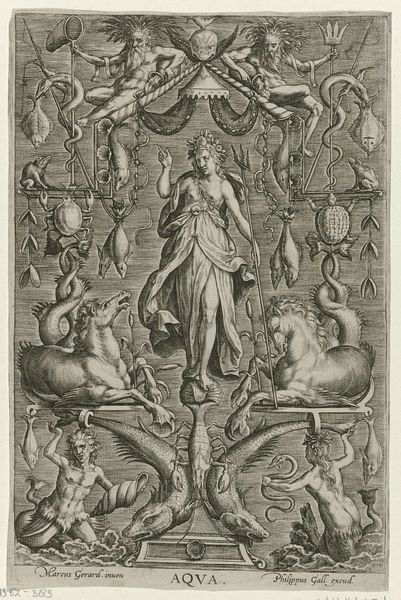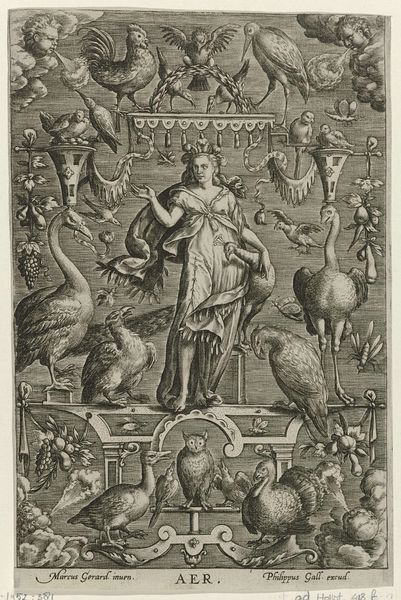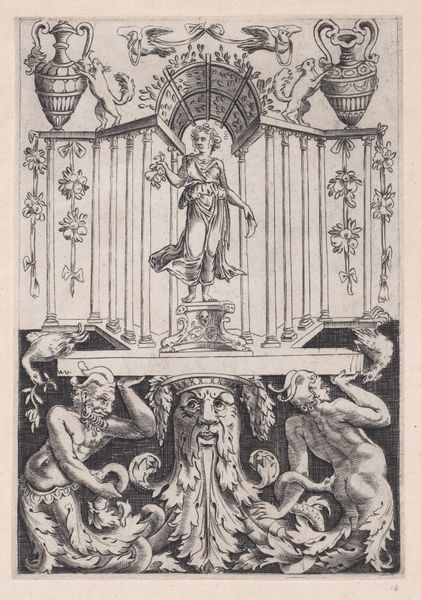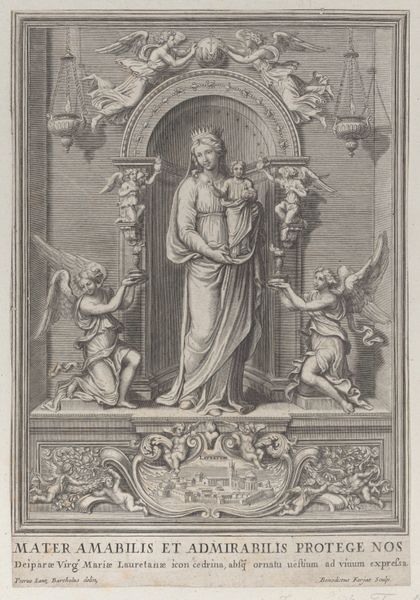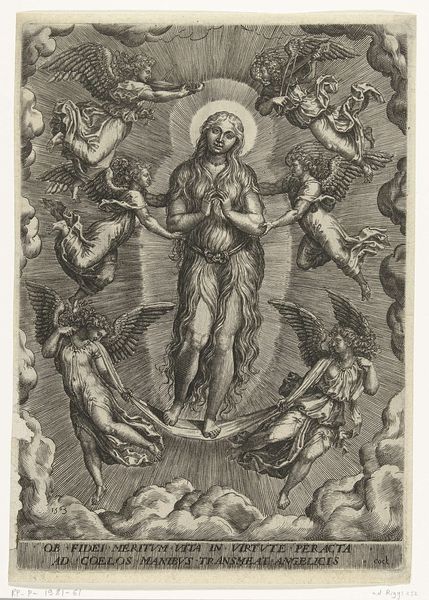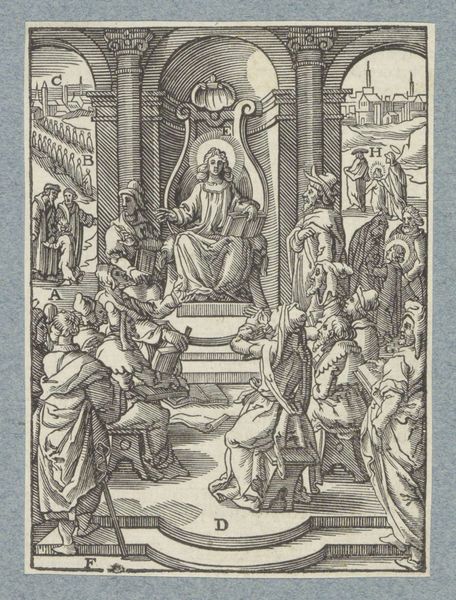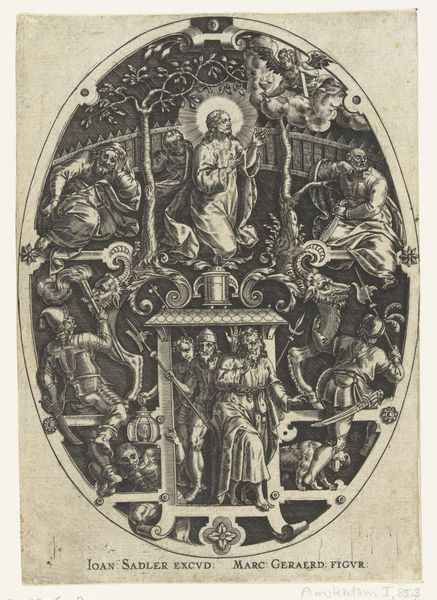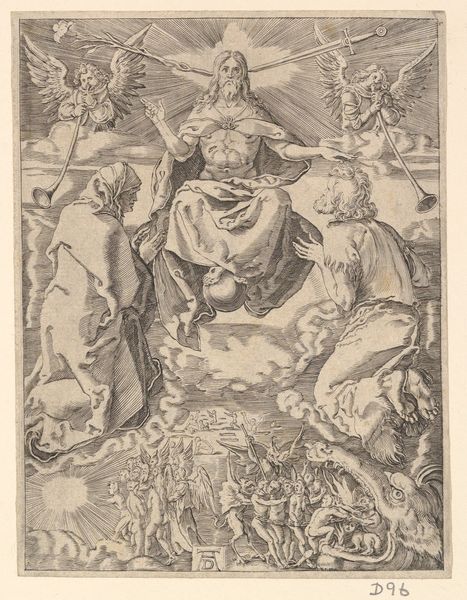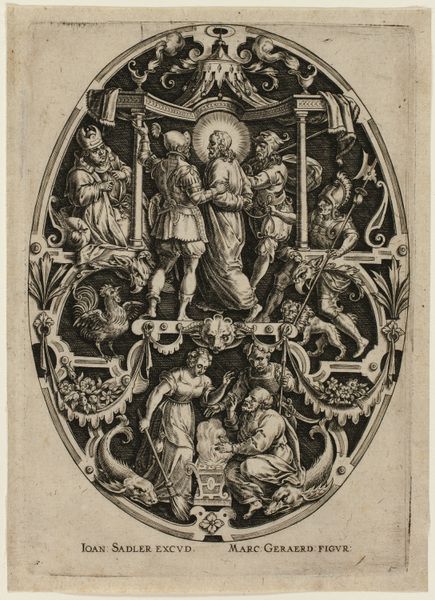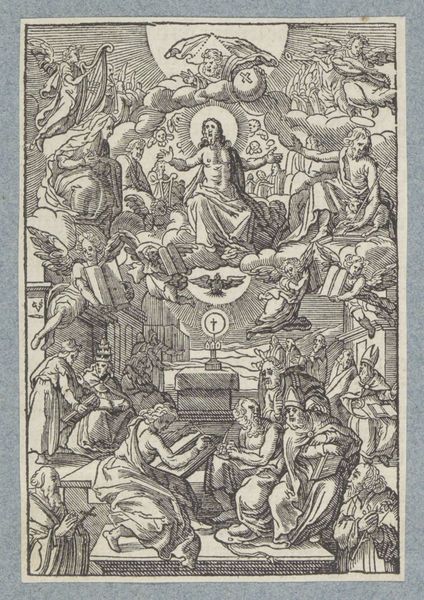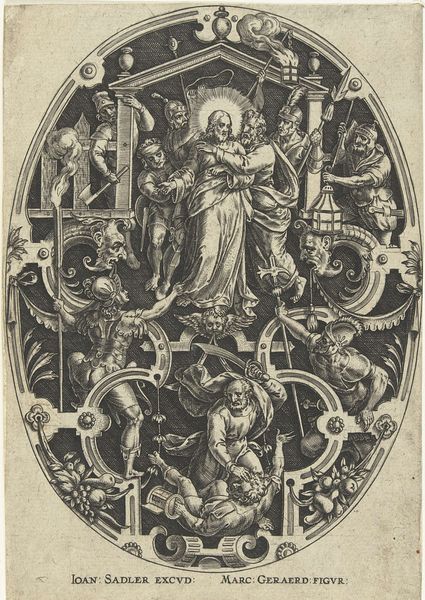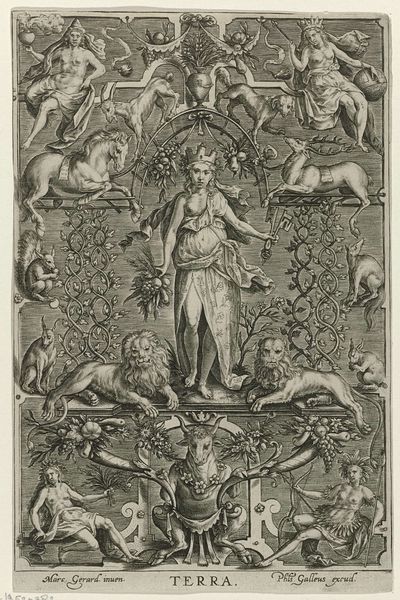
print, engraving
#
allegory
# print
#
mannerism
#
history-painting
#
engraving
Dimensions: height 200 mm, width 134 mm
Copyright: Rijks Museum: Open Domain
Philips Galle created this engraving, entitled Azië, in the Netherlands in the late 16th century. It’s an allegorical representation of Asia, part of a series depicting different continents. The image is filled with visual codes that reflect the cultural understanding of Asia at the time. We see exotic animals like camels and elephants, figures in turbans, and mythical creatures. The central female figure, standing on a pedestal, is sumptuously dressed. This idealized image tells us more about European perceptions of Asia than about Asian cultures themselves. The engraving was made during a time of increasing European exploration and trade with Asia, and these images shaped public opinion. Institutions such as the printing press and the art market played a key role in disseminating these representations. What interests me is how such images both reflect and reinforce power dynamics between Europe and other parts of the world. To fully understand this artwork, we can look into travel literature, colonial documents, and other historical sources to uncover the complex interplay of social, political, and economic forces at play.
Comments
No comments
Be the first to comment and join the conversation on the ultimate creative platform.
